|
-
27th December 22, 08:50 AM
#31
 Originally Posted by Scottish Rock

It almost feels as if by the time I know enough about kilts to order one, I will also know enough to make the damn thing myself*.
You're getting a lot closer! 
Rev'd Father Bill White: Retired Parish Priest & Elementary Headmaster. Lover of God, dogs, most people, joy, tradition, humour & clarity. Legion Padre, theologian, teacher, philosopher, linguist, encourager of hearts & souls & a firm believer in dignity, decency, & duty. A proud Canadian Sinclair.
-
-
27th December 22, 10:16 AM
#32
 Originally Posted by Scottish Rock

Is there any other way to taper the kilt other than tapering the pleats (on the back)? ... I have heard about 'shaping' the apron so I wonder how that is done. Perhaps the first 'hidden apron deep pleat' is used for that? I suppose in terms of pattern design that would be just as usable as a seam to create a taper.
...
I don't believe tapering via the apron involves anything so complex as hidden pleats or darts. Rather, the over-apron merely more triangular in shape, for lack of a better word. My second-best kilt (an online cheapie) has this type of tapering. It looks and fits fine, especially considering its cost. That said, I don't think it looks nearly as good or flattering as my first-best kilt, which is tapered via the pleats.
-
-
30th December 22, 05:52 AM
#33
 Originally Posted by Scottish Rock

Is there any other way to taper the kilt other than tapering the pleats (on the back)?
With 'regular' clothing there are side-seams that can be used to create a taper, but with a kilt there are no side-seams.
The usakilts website does specify "Proper tapering down the fell to conform to body shape" for the semi-traditional that I'm eyeing but I'm not sure if that means they are tapering all the pleats or if they only taper the first and last one.
I'm not a kiltmaker, but I did take a kiltmaking workshop by Elsie Stuehmeyer, so I did go through the process of making a traditional handsewn kilt.
It seemed to me that for men's kilts the differential between waist and hip measurement, where the two opposing waist buckles are and where the "fell" ends, was created by all the pleats equally. However I believe you're right, for men with a big differential between waist and hip the juncture on each side between the pleated rear portion and the aprons will have a bit more of an angle to them.
As I recall when making traditional (men's) kilts for women, such as is done for pipe band women and female Highland Dancers, the waist-to-hip differential requires more extreme shaping, done with more taper to all the pleats and more of an angle at the places where the pleated part of the kilt meets the aprons, in effect at the "side seams" of the kilt. As I recall there's also some amount of shaping which relies on the slight elasticity of the wool fabric.
 Originally Posted by Scottish Rock

I have heard about 'shaping' the apron so I wonder how that is done.
The aprons are merely large pieces of flat fabric and they're cut to an inverted "V" taper.
Elsie did this cut by eye, and shockingly quickly. (Though it wasn't as scary as watching her grab 4 yards of double-width tartan and tear it in two.) The cut of the fringed edge of the front apron is not a straight line, but a rather complex compound curve.
The amazing thing about kilts is how the pleats are all absolutely straight below the fell, yet the apron taper gives the illusion that the entire kilt has a taper to it.
Last edited by OC Richard; 30th December 22 at 05:56 AM.
Proud Mountaineer from the Highlands of West Virginia; son of the Revolution and Civil War; first Europeans on the Guyandotte
-
-
30th December 22, 01:14 PM
#34
As a kilt maker perhaps I can help.
This model illustrates the components of a kilt.
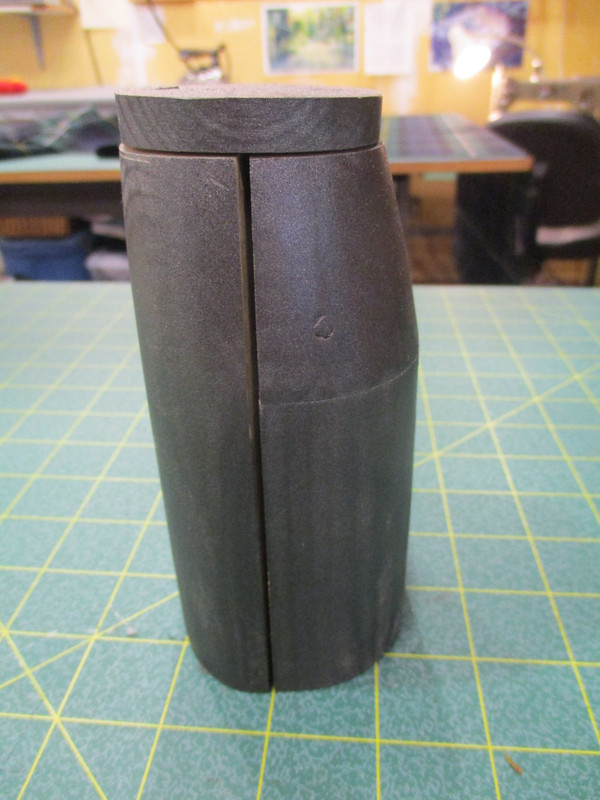
Beginning at the top is the Rise. This is the portion of the kilt above the top strap. On a Traditionally made kilt, designed to fit at full waist height, the Rise tapers outward to fit over the bottom of the ribs. The smallest part of the kilt is at the top strap.
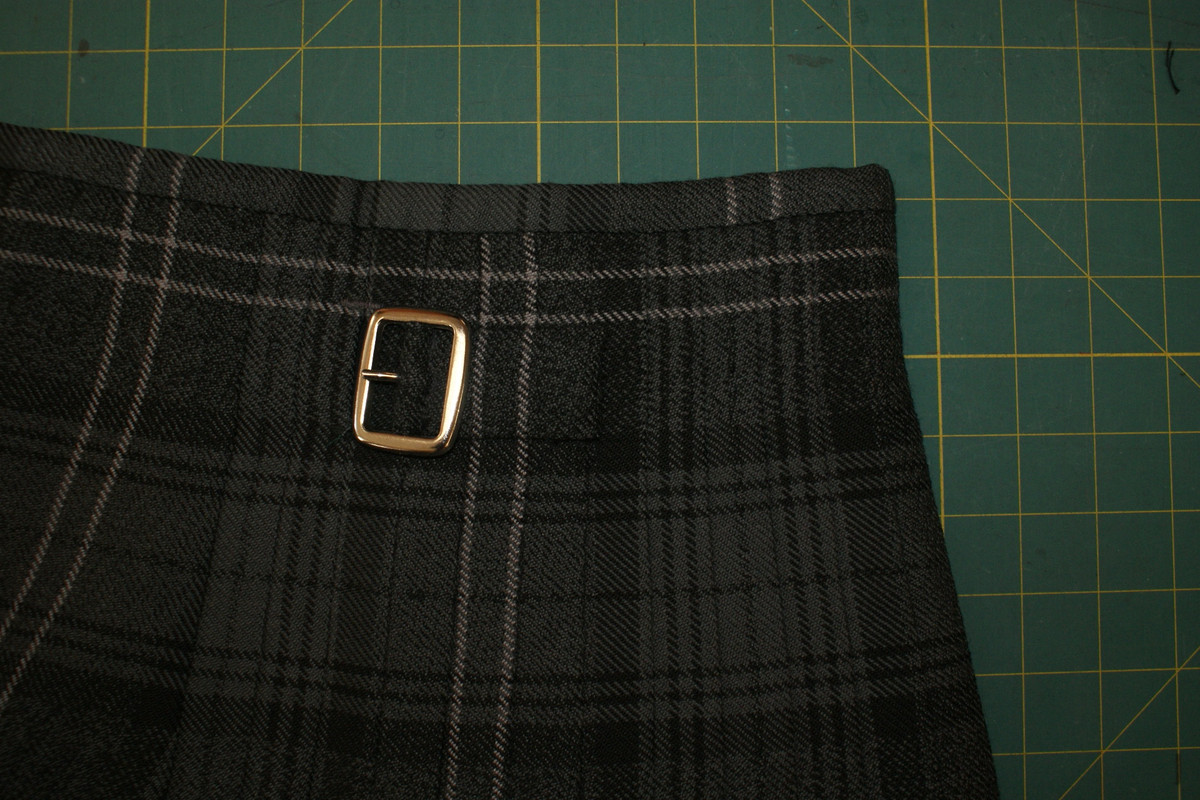
On many kilts made today, and all of the import kilts, there is no reverse taper to the Rise. The smallest part of the kilt is at the top band.
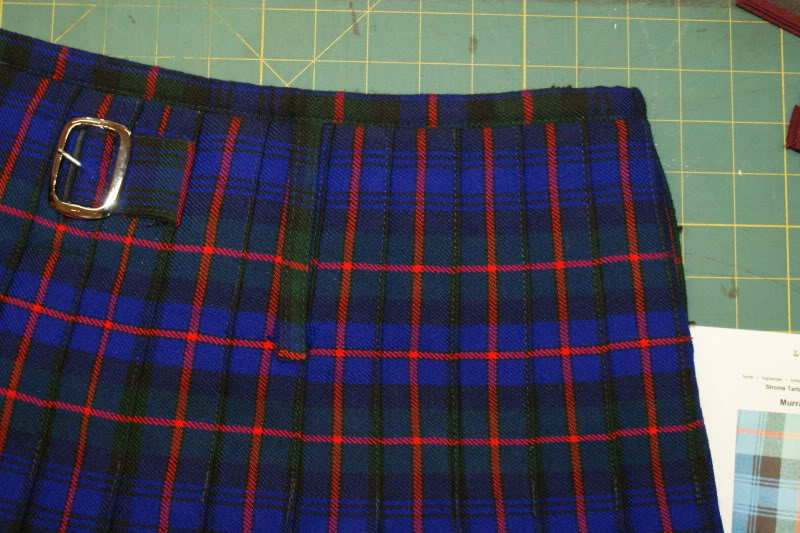
In the front are the two aprons. The under and outer aprons. Both should be tapered so that at the waist, the width is just over 1/2 of the waist circumference. At the hips, the width should be just less than 1/2 of the hip circumference. And these two widths are joined by a gentle "S" curve ending at the bottom edge close to a 90-degree angle.
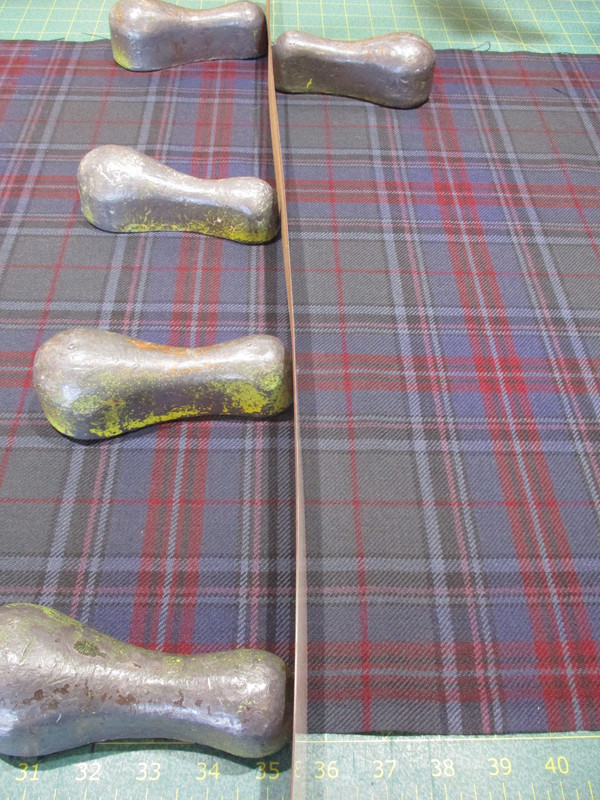
On some kilts for guys with a large difference between the hips and the waist (or has a pronounced belly) his curve may be quite pronounced.
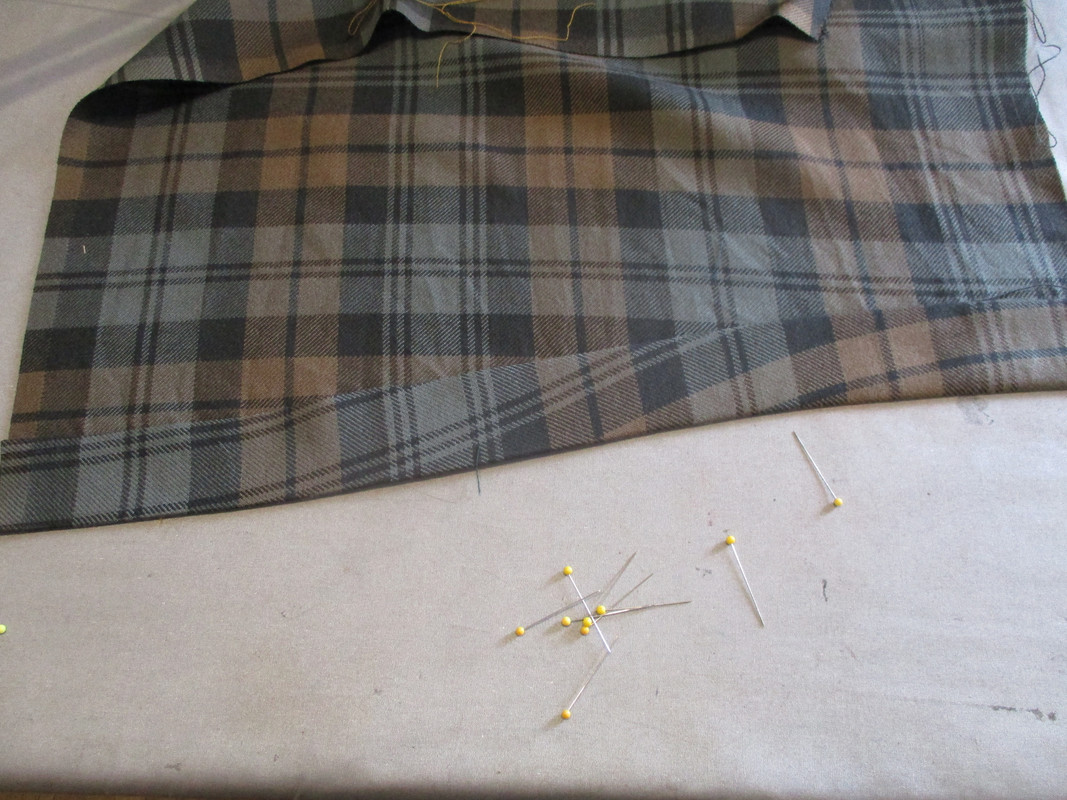
This is perhaps one of the most challenging aspects of kiltmaking as the idea is that the edges of the apron should fall straight down from the largest part of the belly and the outer edges about where the side seams of a pair of trousers would be.
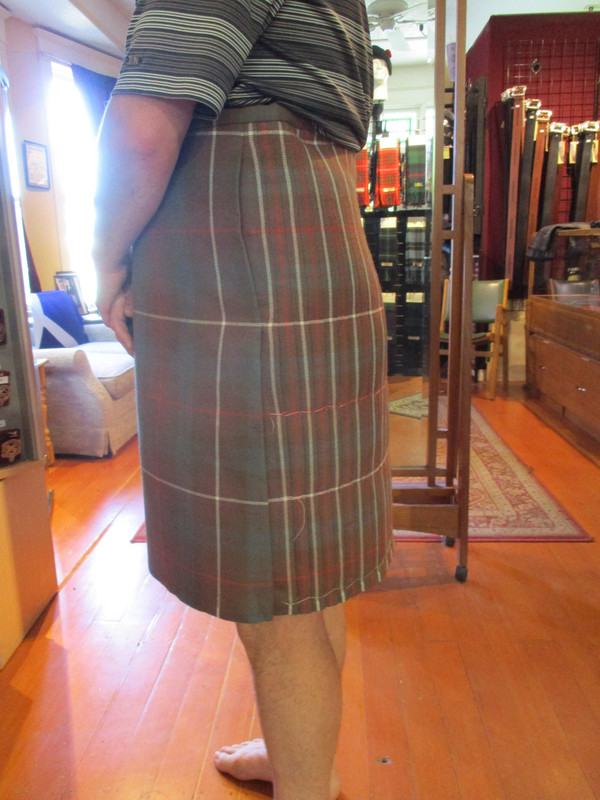
If the apron taper is constructed incorrectly the apron edges may jut forward or open up a gap in the pleat spacing.

The idea is that the aprons should fall straight down from the largest part of the body in front. Without puckers or distortion. The sides should not stick out sideways like a ballet tutu while gently curving around the wearers' legs.
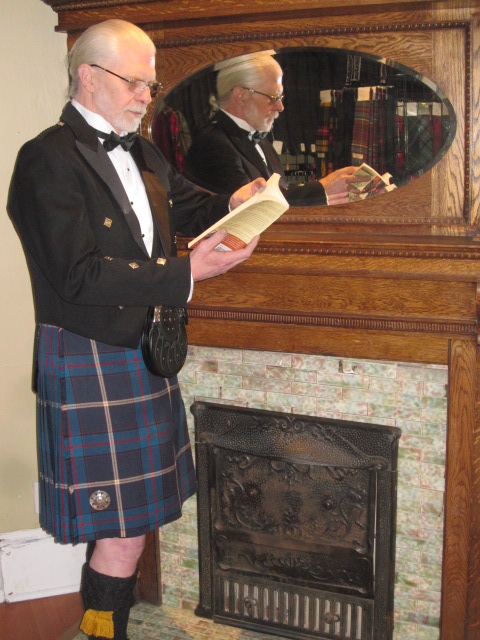
In the back of the kilt, from the bottom of the Rise, to the level of the widest part of the hips and buttocks is The Fell Area. This is where all the tailoring of a kilt is done.
Everyone is larger in the butt than at the waist. Even those with a large belly have a difference between the hips and the waist.
The pleats above the hip line are tapered. This taper is usually small in each individual pleat but combined they make up the total difference between hips and waist.
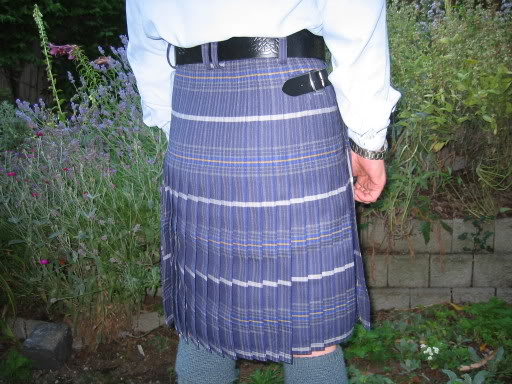
I am sure there are some kilts where all the taper is done in one or two pleats but this would not be the norm.
Below the bottom of the Fell Area the pleats should hang straight down, parallel, without large shower curtain folds or spreading outward in an "A" line skirt shape.
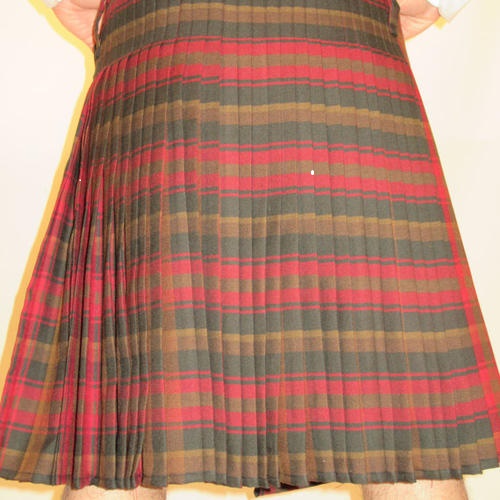
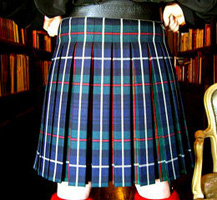
The success of the pleats is partly due to the care in laying out the pleats by the maker.
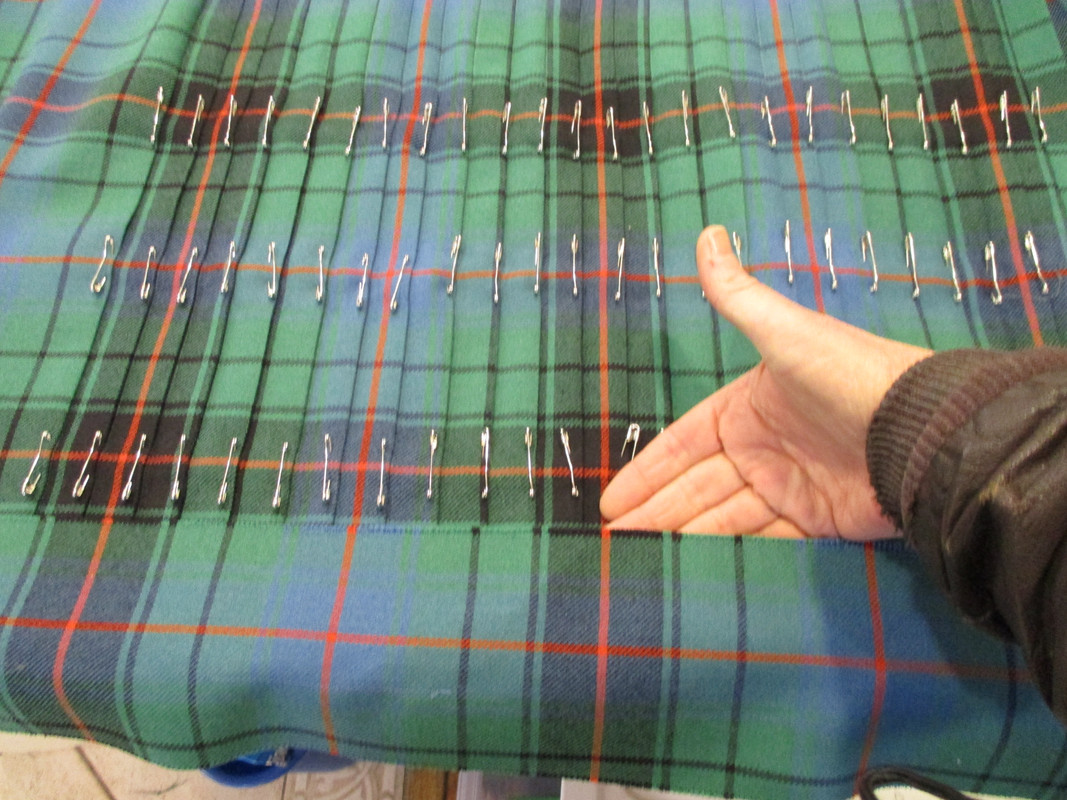
But mostly good looking pleats are due to the accuracy when pressing the pleats. The back of the kilt should appear as one single curve and from just a few feet away the individual pleats should not be apparent.

But of course, all of the above would be for nothing if the garment relied on the outer Tartan fabric and the stitching for all its strength.
This is perhaps the biggest difference between how a kilt is made and how blue jeans are made. Blue Jeans are made from a very stiff, stretch-resistant fabric. There are double rows of very strong stitching at the seam and rivets at stress points.
A kilt derives its strength from internal elements built inside and hidden from view by a cotton liner. Some think that the liner is there to keep the kilt clean. Well, if that were true the liner would be removable and washable.
The whole purpose of the liner is to hide the full floating interfacing and stabilizer that gives the kilt it strength, its shape, and allows the outer Tartan fabric to drape and swish naturally.
Some makers construct very elaborate internal elements that stretch all the way from one apron edge, all the way across the inside of the kilt to the other apron edge.
Basically you are wearing the internal elements.
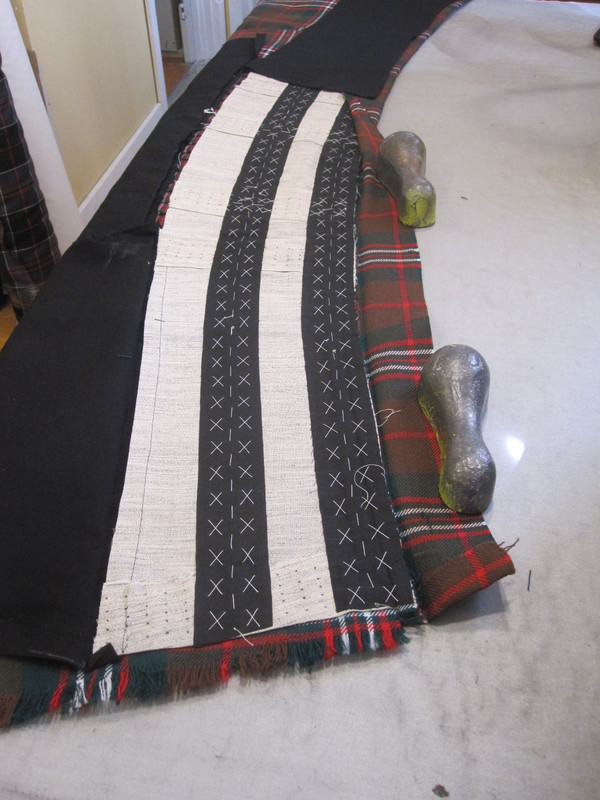
And some makers use a simpler or more basic method of construction.
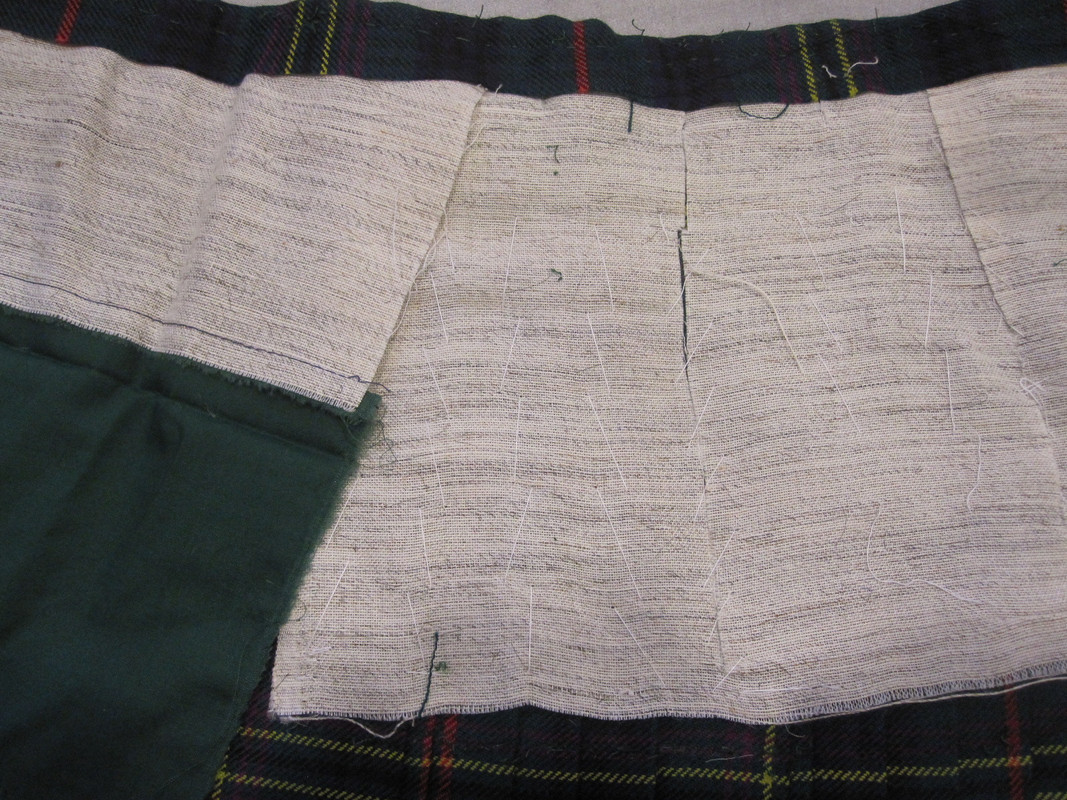
The goal of the internal elements should be the same.
Floating interfacing is a material that is stiffer vertically than it is horizontally. This gives vertical stiffness to the back of the kilt. Some kilts can have a Fell Area that stands up all on its own. And some, not so much.

One of the more important internal elements is the Stabilizer. This acts as an internal belt.
If the internal elements are missing or fail over time the outer Tartan fabric cannot stand up to the stresses all on its own. And distortion of the outer fabric is the result.
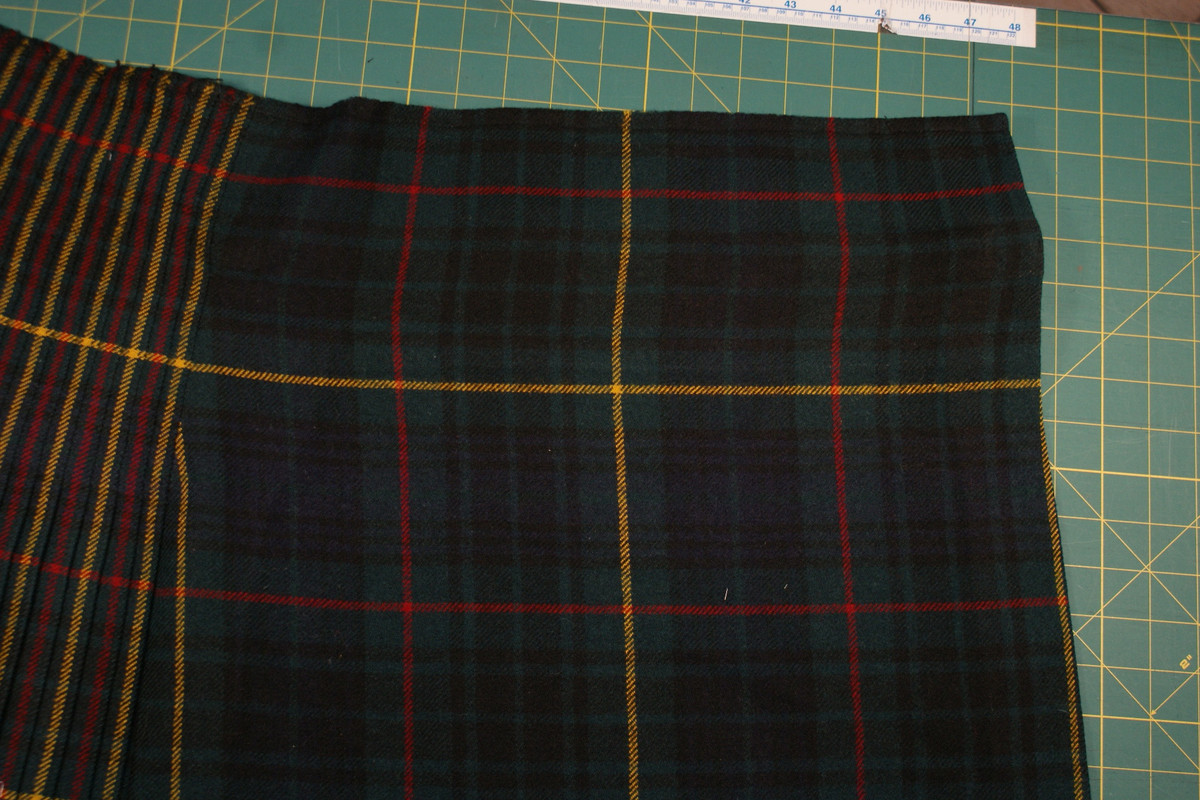
Or a total failure of the entire garment.
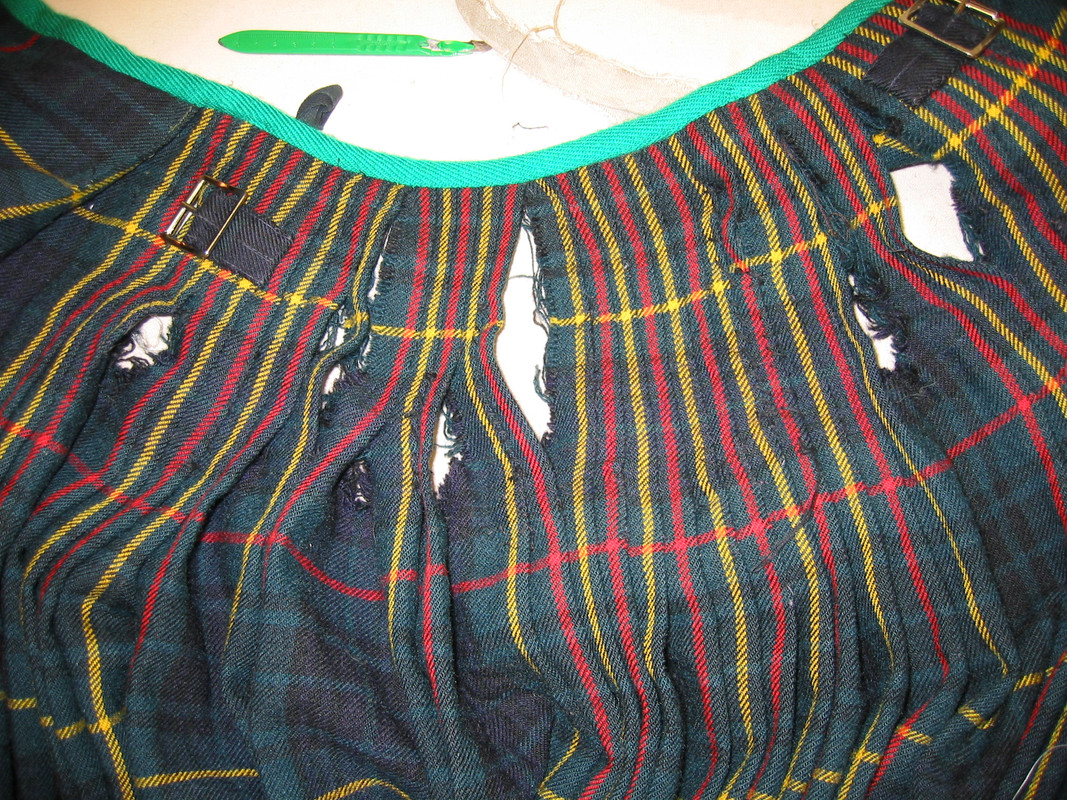
If you are looking at a kilt - and you can lift the inner liner, and there is nothing under it - Run. Run like the wind.

If the Rise does not taper outward a bit. If the aprons are not tapered or are tapered in straight lines. If the lower edges of the apron stick forward or gape open. If the rear of the pleats are not tapered well or some of the Tartan elements are lost in the tapering. Or when you put the kilt on, there are puckers, stress points, pulls, or stressed stitches, you should perhaps look elsewhere.
Last edited by Steve Ashton; 30th December 22 at 01:21 PM.
-
The Following 2 Users say 'Aye' to Steve Ashton For This Useful Post:
-
30th December 22, 04:01 PM
#35
Excellent and thorough reply, Thanks!
Steve thanks so much for your very thorough response. It clarifies so much!
-
-
31st December 22, 11:15 AM
#36
Steve, Richard,
I'm way from home until next Saturday with barely any time to get online until then but for now I just wanted to say thank you very much for your latest replies.
And to all:
Happy New Year!
-
The Following User Says 'Aye' to Scottish Rock For This Useful Post:
-
11th January 23, 07:23 AM
#37
I've done some thinking while on holiday and have decided that, since this is probably going to be my one and only kilt (I hope  ), I'd better get it right and as such I'm willing to spend a bit more than I was thinking of spending originally. Buy once cry once. ), I'd better get it right and as such I'm willing to spend a bit more than I was thinking of spending originally. Buy once cry once.
So my question is: Is there a directory of (good) kilt makers around here?
I'm looking for a kilt maker that is willing to make me a kilt with the following in mind:
- Made from PV (wool does not agree with me)
- At least two leather straps but I think I prefer three
- Top of the kilt itself (not the top strap) at about my navel height which is below my natural waist
- Will still stay in place despite the previous point
As I understand it this mostly comes down to proper tailoring with the pleated section conforming to the small of the back etcetera. - Will take separate rise, drop and fell measurements
I think the rise should be as minimal as possible for what I'm trying to achieve - Will perhaps look at pictures of my physique to ensure a proper fit instead of just going by a few measurements, although I suppose the measurements will be leading in many ways
- Preferrably cut-out pleats to reduce bulk
- Proper internal construction of the kilt otherwise (interfacing and canvas and such)
- Is willing to discuss the above points with me and educate me a bit when I'm wrong about something
Going to a kilt maker physically would be great but simply not possible for me, but with some emails back and forth and maybe some pictures I'm sure a qualified kilt maker will be able to make me an excellent kilt this way.
Is it alright for me to ask any kilt makers reading this to send me a PM or is that bad etiquette? Couldn't find anything about that in the forum rules.
I did reach out to one kilt maker brand back in December with a few questions but never heard back from them. No idea if they thought I was too demanding or difficult a customer (which I don't think I am) or of they were too busy during the holidays and my emails to them were misplaced somehow or if they simply didn't receive my emails in the first place due to some spam filter but it's not a great start.
I will likely contact them again to see what's going on and I'm willing to cut them some slack (I run my own company and know how things can go wrong) but in the mean time I would like to expand my options and see if there is a kilt maker out there who might be able to serve me even better.
-
 Posting Permissions
Posting Permissions
- You may not post new threads
- You may not post replies
- You may not post attachments
- You may not edit your posts
-
Forum Rules
|
|
Bookmarks